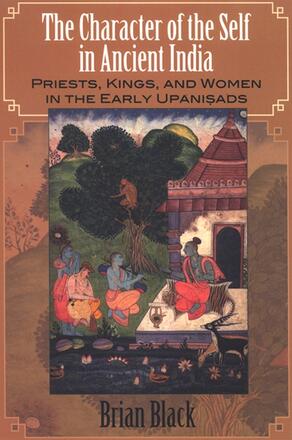
The Character of the Self in Ancient India
Priests, Kings, and Women in the Early Upaniṣads
Alternative formats available from:
Explores the narratives and dialogues of the Upanisads and shows that these literary elements are central to an understanding of Upanishadic philosophy.
Description
This groundbreaking book is an elegant exploration of the Upanisads, often considered the fountainhead of the rich, varied philosophical tradition in India. The Upaniṣads, in addition to their philosophical content, have a number of sections that contain narratives and dialogues—a literary dimension largely ignored by the Indian philosophical tradition, as well as by modern scholars. Brian Black draws attention to these literary elements and demonstrates that they are fundamental to understanding the philosophical claims of the text.
Focusing on the Upanisadic notion of the self (ātman), the book is organized into four main sections that feature a lesson taught by a brahmin teacher to a brahmin student, debates between brahmins, discussions between brahmins and kings, and conversations between brahmins and women. These dialogical situations feature dramatic elements that bring attention to both the participants and the social contexts of Upanisadic philosophy, characterizing philosophy as something achieved through discussion and debate. In addition to making a number of innovative arguments, the author also guides the reader through these profound and engaging texts, offering ways of reading the Upaniṣads that make them more understandable and accessible.
Brian Black is Research Associate at the School of Oriental and African Studies at the University of London.
Reviews
"Black's book is well researched and intelligent … Most impressive is his ability to bring out the concrete and the social in these narratives, including issues of wealth, prestige, regional rivalry, and gender relations." — Journal of the American Oriental Society
"…[an] innovative and stimulating account of early Indian thought." — History of Religions
"…among the first to analyze the Upanisadic texts as literature as well as foundational philosophical texts … Black's effortless writing style does not over-simplify, but draws together a vast amount of background information in order to enrich the characterisations of the leading teachers in the Upanisads." — Culture and Religion
"This is an outstanding book." — Patrick Olivelle, editor of Between the Empires: Society in India 300 BCE to 400 C
"This is the finest, most insightful, and most theoretically sophisticated book on the Upanisads I have ever read. For years I have had students come up to me after class and ask me to recommend a book on the Upanisads and I never could. Now, at last, we have a long critical read of these texts from a multitheoretical perspective: sociological, historical, rhetorical, and gendered." — Jeffrey J. Kripal, author of The Serpent's Gift: Gnostic Reflections on the Study of Religion